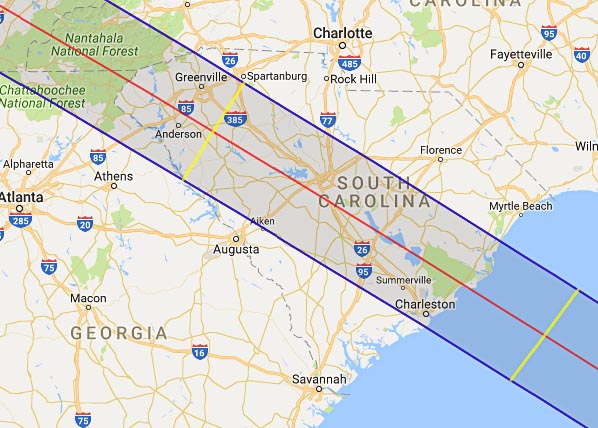The solar eclipse came and went. I was fortunate to be invited out to Salley, SC, to Whit Gibbon’s property. Whit is an internationally-known herpetologist and author of numerous articles and books. He had invited me out to his property back in July and I quickly determined he was making it a bio-preserve. Whit is a conservation guy. He had already invited several different experts out there to catalog the flora and fauna on his property and in meticulous detail he had the books and pamphlets of the results of the inventories out on a table in his cabin there. He had a very comfortable, small cabin built on the property and, of course, he had tin and boards scattered throughout his property for snakes and herps. There’s an endless list of things to do out on his property if you’re a biologist. We spent a half-day together and walked his property, listening and observing birds. In our conversations I mentioned my wife, Joy, and her expertise in bats. We immediately concluded to conduct a bat survey on his property. Joy and I came in August and conducted the survey and Whit invited his son and grandson to observe. We had a great time and captured 2 species (Red and Evening bat) of 8 individuals. Anyway, because of this bat survey and the inital invitation I’ve become friends with Whit and so I was thrilled to get an invitation to his bio-preserve for the upcoming total solar eclipse.
The eclipse’s path took it close to Aiken, SC, our home but only the northern parts of Aiken seemed to be in the general path. I had wanted to drive out into the country and get in the middle of the path and get some photographs if possible.
Whit’s bio-preserve is further north and west of Aiken, on the Aiken and Orangeburg county line, and he has a big field which seemed like it would be perfect for viewing the eclipse. I was worried about the traffic but it wasn’t bad at all. In addition, Whit had solar glasses for everybody so I didn’t have to do anything, just bring my cameras and something to drink.
When I arrived I didn’t know but three people, Whit’s wife, Carolyn, and two others and only by passing and knowledge of their work at Savannah River Ecology Lab. To the rest of the people I was a complete stranger. It didn’t bother me, I was there to meet people, yes, but I was focused on attempting to get some shots of totality. I made chit-chat and met some of Whit’s friends there and I reminded people aloud that totality was approaching at 14:42 EST. I blurted out, “Ten minutes to totality!” I kept the countdown going to get people excited and focused on the event.
The weather forecast for 21 August 2017 was partly cloudy with a 30% chance of rain. While I was driving out to Salley, I noticed the numerous fluffy cumulus clouds. I was concerned about them. However, plenty of sunshine on the drive out there too so I was optimistic. I arrived and I had an hour and half to totality. As we approached 14:42 EST, the sun moved through two cumulus clouds. In the last cumulus cloud, it blocked the sun almost entirely. I watched the direction the clouds were drifting and tried to visualize a clear path of the sun. There was one more potential cloud that could affect us but, alas, the sun and moon steered clear and I was confident we were going to observe the full spectacle in big clear sky.
I use a Nikon 7200 with a 200-500 mm lens. I had quickly watched some YouTube videos on photography advice on the settings for cameras during the eclipse. I was ill-prepared and did my research at the very last hour. However, several videos converged on setting the ISO to 200, F8, and 1/160 exposure. I also made some final adjustments to my lens and cleaned the lens thoroughly. I obtained a tripod, set my camera up on the tripod beforehand and wrapped it in a towel to protect it from the sun and heat. The heat was subsiding due to the blockage of the moon. That was very noticeable. In addition, our shadows started to appear as we approached 14:42 EST. I was set. The gnats and flies started to swarm with the lower light and cooler temperatures. Birds started to sing more frequently and katydids and cicadas started to crank up the intensity of their calling. When totality was achieved, I quickly sprung into action, removed my lens cap, and aiming my camera at the eclipse.
Here’s among the first photographs I got. You can see some of the flares on the lower middle and right. No solar filter is necessary during totality.
I set my camera to RAW formatting of the images and taught myself Adobe Lightroom in about an hour’s time and edited some photos. I changed the exposure and lighting some in this shot. I think it’s a little better or at least it’s a different perspective of the lighting. You can see the reddish flares even more in this shot.

Overall, it was very cool event. The change in the light, the visible stars, the increase in bird and insect calls, and the minute and half time span of the event was unforgettable. I have a new appreciation of total eclipses. I’ll be sure to view and photograph another one in my lifetime.

